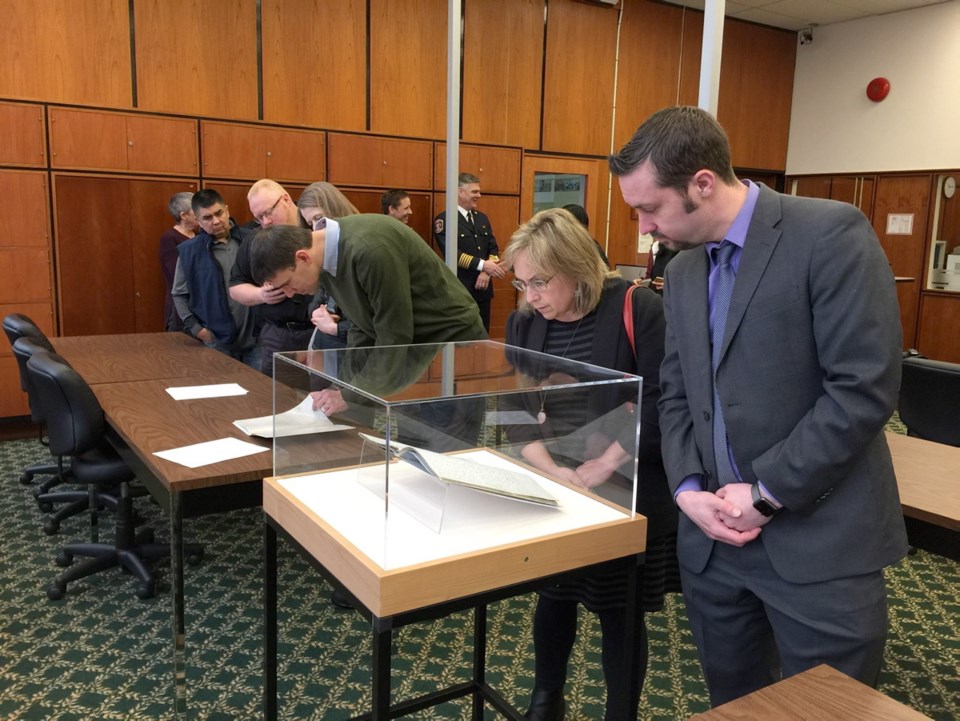The British government established its presence on Vancouver Island in 1849 by granting it to the Hudson’s Bay Company to promote colonization.
One requirement of colonization was extinguishing any indigenous interest in the land. That task was given to Sir James Douglas, a fur trader and officer of the company who was appointed governor. He met with First Nations and produced what are known as the Douglas treaties.
The treaties are 14 written documents surrendering the land to the Hudson’s Bay Company, while reserving all village sites and enclosed fields to the indigenous parties and confirming their right to hunt over the “unoccupied land” and to fish “as formerly.” The treaties cover about 930 square kilometres on Vancouver Island, mostly around Greater Victoria, Nanaimo and Port Hardy.
How the treaties are interpreted and applied has been debated by many. There are a few significant tests of the treaties in the courts, including:
• The first court case on the treaties, R. v. White and Bob, was decided in 1964. As a defence to a charge of hunting out of season, the defendants, who were members of the Snuneymuxw First Nation, relied on the hunting guarantee in the 1854 Nanaimo treaty. The Crown argued that the agreements weren’t treaties, merely private agreements with the HBC. The B.C. Court of Appeal (affirmed by the Supreme Court of Canada) held that the agreements were treaties under the federal Indian Act, and therefore the hunting provisions took priority over provincial game laws.
• The next significant case was R. v. Bartleman in 1984. Another hunting case, it affirmed that the Saanich treaty right to hunt on unoccupied public or private land included lands anywhere in the traditional hunting territory of the tribe, whether they were within the lands ceded by this particular First Nation’s treaty or not. Just as important, it was the only case in which the court raised concerns about written text having been inserted after the indigenous parties signed, and even whether they had actually signed anything.
• The most important litigation to date concerning the treaty fishing right was the Saanichton Bay Marina case in 1989. In earlier cases, the indigenous defendants used the treaties as shields, to defend themselves against prosecution. In Saanichton Bay, the Tsawout people used their treaty as a sword, to stop development of a marina that would adversely affect their treaty right to enjoy “their fisheries as formerly.” They were successful.
• The last case is R. v. Morris (2005), in which the Supreme Court of Canada was asked to decide a very narrow issue: Was a provincial ban on hunting at night a justifiable infringement on the Saanich treaty right to hunt? The Crown argued that the ban should take priority on the grounds of public safety. The court found that night hunting was not inherently dangerous, so the Saanich people could exercise their treaty right to hunt at night as long as they did so in a safe manner.
Since then, the Songhees and Esquimalt First Nations have filed a claim that the provincial legislature sits on a 10-acre parcel of land set aside as a reserve by Douglas, which had never been properly surrendered. The case did not go to trial, but was settled out of court by the provincial and federal governments.
Recently, the Songhees and Esquimalt First Nations have commenced another action against the federal and provincial governments, claiming that a village site and surrounding land at Cadboro Bay should have been set as a reserve pursuant to the terms of the written versions of the treaties of 1850. That dispute is awaiting trial.
Hamar Foster is a retired professor and Neil Vallance is a recent doctoral graduate of the University of Victoria Faculty of Law.



